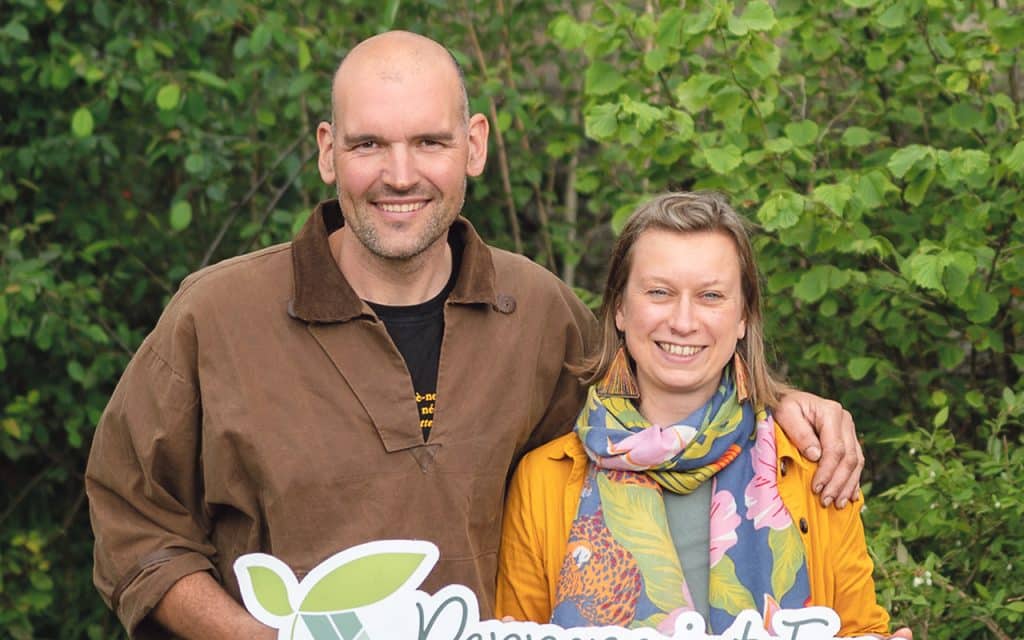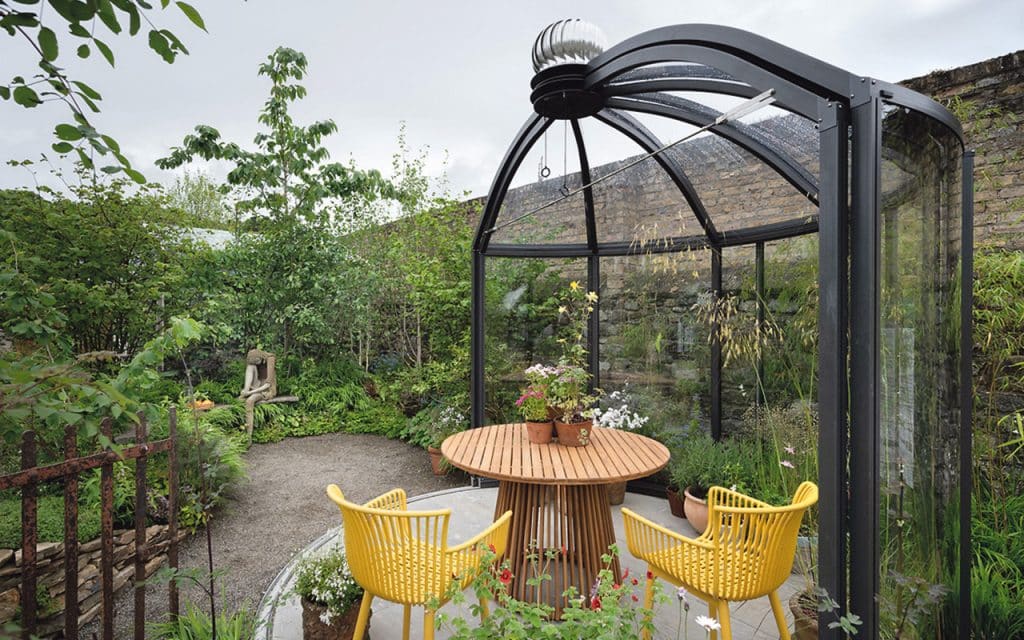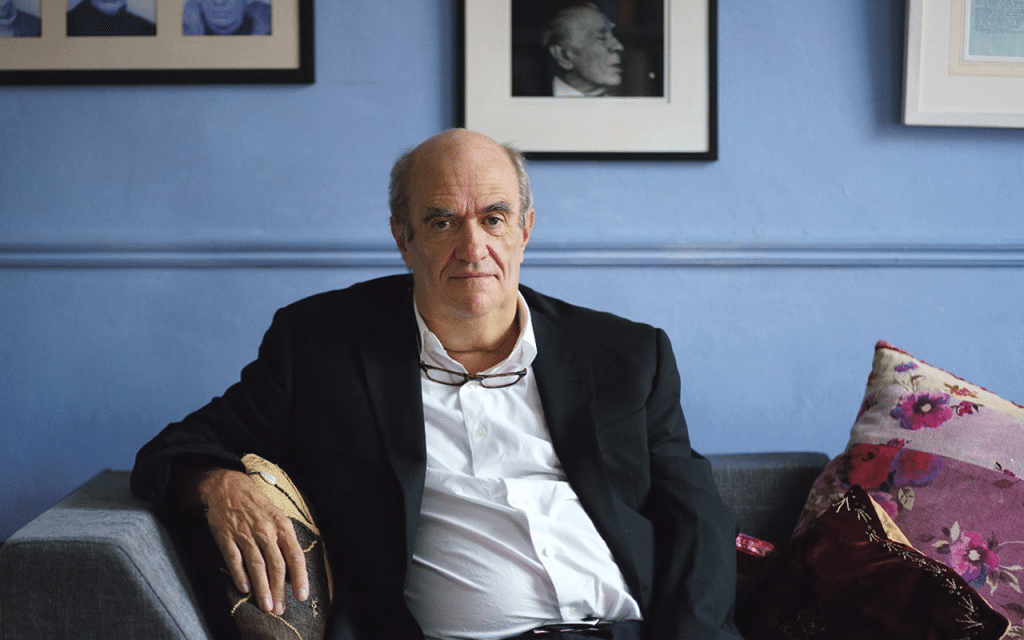
The Sun Harness Garden designed by Hendrik Lepel and sponsored by Peppermint Farm Glasshouses received a silver medal in the Show Garden category at Bird Bia Bloom 2024. Garden Designer Hendrik chats to West Cork People about his experience at Bloom and shares some advice for gardeners.
What interests you most in terms of designing a garden?
I have a huge interest in the outdoors, and for me: the garden. After the kitchen, it is the most important ‘room’ of a house, because I feel the garden is an outdoor room where you can wind down and relax, a space where all your senses get stimulated.
Your background is in stone and construction engineering. How does this influence you when you’re designing a garden?
My background allows me to take a very practical approach to my designs. The designs have to work first and foremost, and they have to make sense in terms of: practicality, access, maintenance.
What type of plants do you most enjoy working with and why?
Definitely perennials, because they go with the season and grow only to a certain height. Basically, they look after themselves, so the maintenance in the long run is cut down by a lot. This would be my natural choice because I like practical garden designs.
Are there plants that you would always place in a garden?
If you consider trees as plants, I always like to integrate trees into the gardenscape because they give you a certain height. They give you shade as well and protection and provide a rain canopy, so there are many advantages to planting trees.
In your experience, what are the greatest mistakes that people make when designing their own garden…what advice would you give?
People are sometimes very impatient when it comes to gardens. They want instant gardens Sometimes this leads to the wrong choice of plants; plants that grow very quickly to maturity. The problem is that once they are mature, they become a constant maintenance issue. For instance, in terms of hedging, some hedges need to be cut twice a year. You can become a slave to your garden because everything is just overgrown. With perennials you start them small, so there will be maintenance in the beginning, but then, after two or three seasons, your garden can basically look after itself.
Tell us about your experience designing a garden for Bloom this year, the highlights and the challenges?
Bloom was certainly quite an experience for me, as I had not entered a show garden competition before. Also, a show garden is something for ‘show’, so, in order to present a garden that looks mature you need a lot of plants, which in reality takes years to establish. So, this was certainly a huge experience for me. I really liked the camaraderie amongst the designers helping each other out.
Winning a silver medal at Bloom was a big highlight.
Challenges: Just like with every project, you face challenges. And Bloom was no different: In terms of timescale, I had three weeks to build this garden, of which for one, I was actually sick. So, I had a lot of catch up to do and, as I’m based down in County Cork, there was a lot of going back and forth in terms of logistics as well.
What was your inspiration for the sun harness garden and did the finished garden reach or exceed your expectations and in what way?
I built the Sun Harness Garden to inspire visitors by addressing the prevailing topic in Irish society — the quest for more sunlight and warmth. I wanted to motivate visitors to reevaluate their own gardens and consider how they can improve their outdoor spaces by implementing sun-harnessing design elements and concepts.
I studied permaculture in Kinsale at the College of Further Education and this was an inspiration for this garden because permaculture talks about how to harness the sun’s energy. The primary concept behind the ‘Sun Harness Garden’ is to showcase the design and implementation of a system that captures and harnesses solar energy, consequently creating a favourable microclimate for both plants and people. This concept is particularly significant for Ireland, where the need to extend the short summer season is a prevalent concern.
Did the finished Garden reach or exceed, your expectations…and in what way?
Yes, I think it has exceeded my expectations, in that I achieved everything I wanted to achieve. Just by listening to what the public or the visitors of Bloom had to say about the garden when they passed, I think they really understood the concept, which I’m very happy about that.
How can people best achieve a microclimate in their own garden?
The best way to create a microclimate is to have a greenhouse, which really helps to extend the seasons. Extending means you can grow plants earlier and harvest much later in the season.
And if you don’t have a greenhouse?
You certainly have to look at the north-south aspect of your garden: incorporate multiple sun traps, such as a horseshoe-shaped planting scheme, with taller plant layers (trees) on the north side, opening to the south, and sloping toward the east and west orientations and/or for instance a drystone wall that acts as a heat store which creates a beneficial habitat for the eco system.

With new houses leaving a lot less space for gardens today, what is your advice to someone hoping to get the most out of their small garden space?
This brings us back to having an actual greenhouse because a greenhouse does not even require a lot of sun in order to heat up. We also talk in terms of food security – this can open up a lot of possibilities even when you have a small garden. I certainly would look into making your small garden more productive (maximising the output even in a small garden).
Any other relevant information you’d like to share?
The key engagement space in the garden was the RONDO, a 360 degree rotatable glass pavilion, where visitors could experience firsthand the power of harnessing the sun. When stepping inside the RONDO, one can feel the warmth from the sun or, when it’s absent, experience it from the heat-storing patio below. The sun-rotating glass pavilion seamlessly integrated into my design and bridged the gap between indoor comfort and the serenity of the outdoors. The glass pavilion can be opened by 180 degrees and its glass shells can be rotated to whatever direction the wind is coming from, so it provides ventilation and shelter – an outdoor room that is perfect for the Irish weather.
For more information on Peppermint Farm Glasshouses email: enquiries@peppermintfarm.com or phone 087 485 3979
www.peppermintfarm.com


